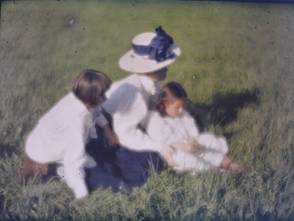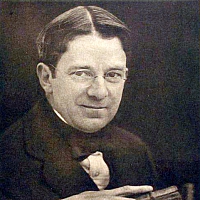
Heinrich Kühn, Miss Mary, Lotte, and Hans, circa 1907, Autochrome. 18.0 x 24.1 cm
HANS P. KRAUS JR 962 Park Avenue at 82nd Street 10028 New York États-Unis
Basel, Switzerland – Exhibiting for the 21st year at Art Basel, Hans P. Kraus Jr. Fine Photographs will present landmark works from the early history of photography. Signature images will be on view from such important innovators as William Henry Fox Talbot, Hippolyte Bayard, Anna Atkins and Gustave Le Gray as well as works by early 20th century masters such as Alvin Langdon Coburn and Heinrich Kühn.
William Henry Fox Talbot (1800-1877) conceived of the very idea of photography during the 1830s, combining the use of the camera obscura with light sensitive-chemistry. Ela, an intimate portrait from the early 1840s, depicts the photographer’s young daughter gazing pensively beyond the camera.
Hippolyte Bayard (1801-1887), whose early photographic discoveries were perhaps eclipsed by those of Talbot and Daguerre, is represented by a rare 1842 salt print, Moulin de la Galette (Montmartre), depicting the famous windmill in Paris that would later be painted by Van Gogh and many others.
The first woman photographer, Anna Atkins (1799-1871), chose the medium for her botanical studies. The delicate but graphically vibrant cyanotype Polypodium Dryopteris, 1852-1854, is a stunning example of her work, presented to her friend, Anne Dixon, in 1854.
Gustave Le Gray (1820-1884), the French painter who became the leading French photographer of the 1850s, is most celebrated for his seascapes. In Salvos of the French Fleet, Cherbourg, 1858, he combined two negatives to create a convincing action scene with cannon smoke and billowing clouds. This fine print was recently found in the archive of the French painter, Romain-Etienne Prieur.
Inspired by these early pioneers, the first commercial color process, the autochrome, was introduced in 1907 by the Lumière brothers and was immediately embraced by the most active photographers of the day. The starch grains making up the color image gave the final, unique picture an overall haziness that fit perfectly with turn of the century pictorial conventions and was reminiscent of Pointillist painting.
Heinrich Kühn (1866-1944) was among the first to excel with the autochrome. The Austrian counterpart of Alfred Stieglitz, he formed his own Pictorialist group, the Viennese Trifolium, and constantly explored new photographic processes. His autochrome entitled Miss Mary, Lotte, and Hans, circa 1907, portrays family members relaxing on a grassy hillside. This intimate tableau recalls the work of the Impressionist painters.
With his Pictorialist portraits and cityscapes, Alvin Langdon Coburn (1882-1966), was known for his association with the Photo-Secession, the early 20th century group that promoted photography as a fine art. However, in 1917, Coburn produced a small series of photographs known as Vortographs, a reference to the British Vorticist movement, which grew out of Cubism and Futurism. Coburn created these, the very first intentionally abstract photographs, by placing three mirrors over his camera lens. The resulting images were kaleidoscopic visions of light and shadow, predating other early abstract photograms by Christian Schad, Moholy-Nagy and Man Ray. Vortograph, 1917, is a rare, untrimmed silver gelatin print from the collection of Leonard Arundale, a close friend of Coburn.
The exhibition will be on view at Art Basel at Hans P. Kraus Jr. Fine Photographs, Hall 2.0, Booth D9, from June 16 through 20, 2010. During the fair +1 917 273 4609.




